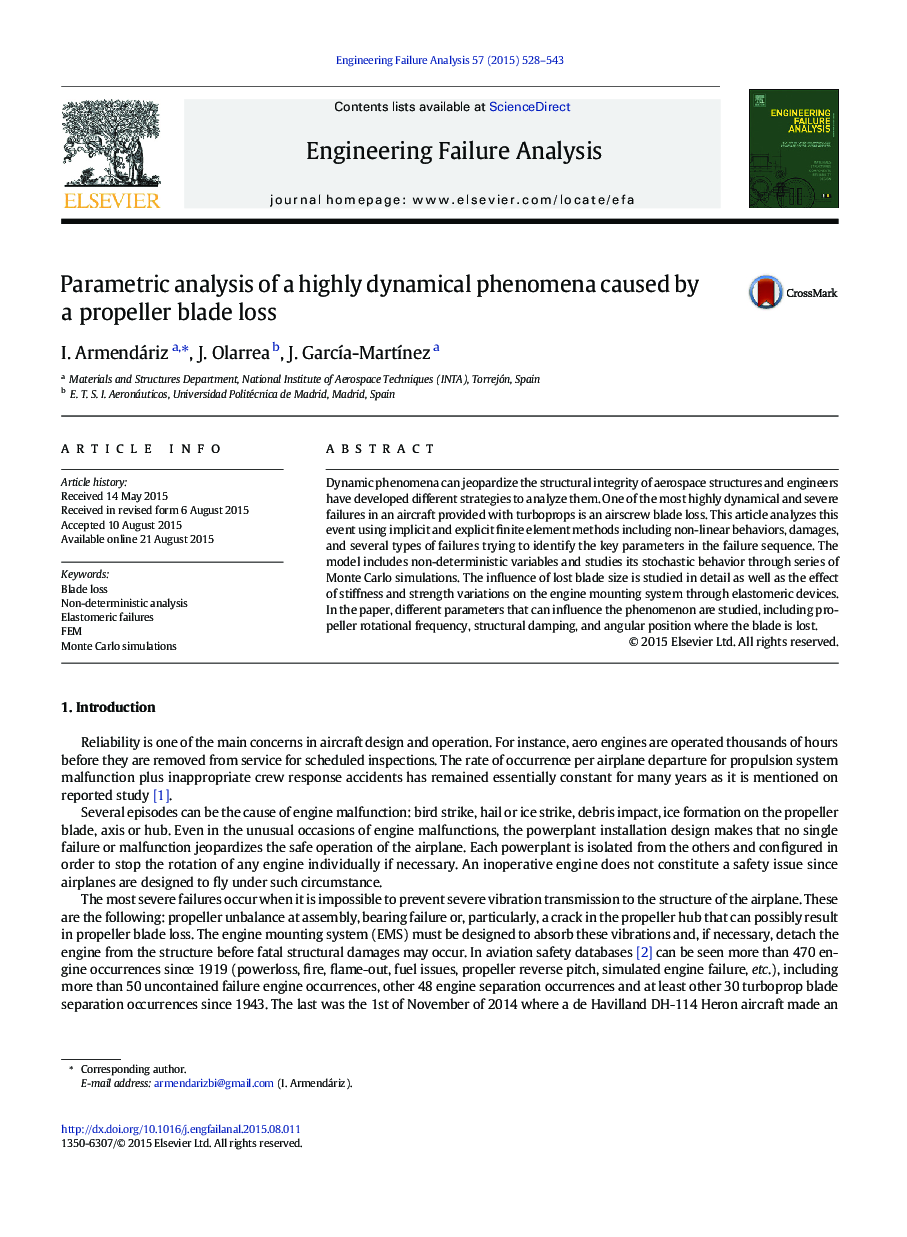| Article ID | Journal | Published Year | Pages | File Type |
|---|---|---|---|---|
| 7168335 | Engineering Failure Analysis | 2015 | 16 Pages |
Abstract
Dynamic phenomena can jeopardize the structural integrity of aerospace structures and engineers have developed different strategies to analyze them. One of the most highly dynamical and severe failures in an aircraft provided with turboprops is an airscrew blade loss. This article analyzes this event using implicit and explicit finite element methods including non-linear behaviors, damages, and several types of failures trying to identify the key parameters in the failure sequence. The model includes non-deterministic variables and studies its stochastic behavior through series of Monte Carlo simulations. The influence of lost blade size is studied in detail as well as the effect of stiffness and strength variations on the engine mounting system through elastomeric devices. In the paper, different parameters that can influence the phenomenon are studied, including propeller rotational frequency, structural damping, and angular position where the blade is lost.
Keywords
Related Topics
Physical Sciences and Engineering
Engineering
Industrial and Manufacturing Engineering
Authors
I. Armendáriz, J. Olarrea, J. GarcÃa-MartÃnez,
